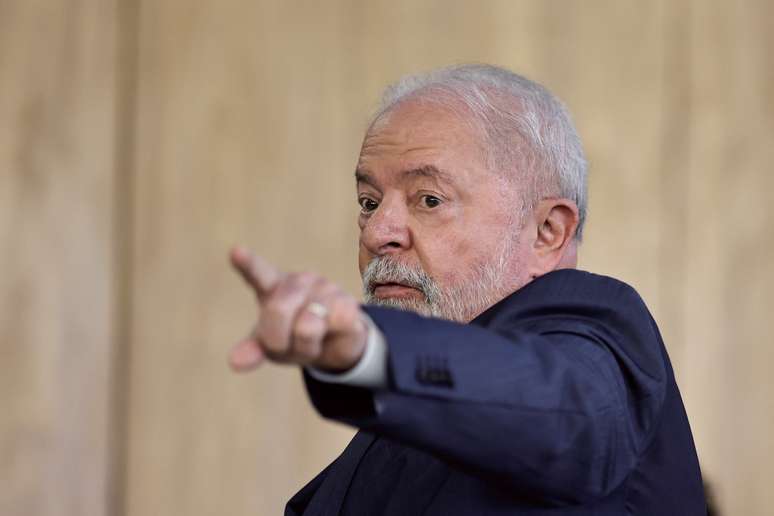The president harshly criticizes the decisions of the Central Bank, which sets the Selic rate, and says that maintaining the index is an urgent matter
The Monetary Policy Committee (Copom) of Central bank opted, for the sixth consecutive time, to keep the Selic rate at 13.75%, as announced on Wednesday 3. The decision came despite strong pressure from the president, Luiz Inácio Lula da Silva (PT), reducing the index.
Copom meetings to maintain the Selic rate take place every 45 days and the next one is scheduled between 20 and 21 June. This means that, at least until then, the Selic remains at the level of 13.75% — a number that has been in effect since August 4 of last year.
The last time the Selic traded higher than this was in the cycle from October 19, 2016 to November 30, 2016, when the index was up 14% per annum.
Lula is a strong critic of Selic’s hike cycle and, from the beginning of his mandate, he exerted strong public pressure against the Central Bank and its president, Roberto Campos Neto, for the reduction of the index.
In a speech at the meeting of the trade union offices of São Paulo, Monday 1st, the president he blamed Selic for unemployment in the country, which continues to grow in the last quarter and has 9.4 million unemployed. “We can no longer live in a country where the interest rate does not control inflation, it controls unemployment in that country because it is responsible for part of the situation we are experiencing today,” he said.
What is Selic and why does Lula want to reduce it?
The Selic, considered the basic interest rate of the Brazilian economy, is a reference for all interest rates in the Brazilian market. It is the main monetary policy tool used by the Central Bank to control inflation.
That is: when interest rates rise, financing, loans and card payments become more expensive, which discourages consumption And consequently, encourages a decline in inflation.
On the other hand, if the economy is slow and the BC cuts interest rates, that makes borrowing cheaper and encourages consumption. Lula then wants the Selic rate to be reduced so that the population can consume again and the economy warms up again. With this, unemployment also decreases, as companies will have a higher demand for employees and more money available to invest in growth.
no surprises
Analysts and economists, however, were already expecting the Selic to remain at 13.75%. Many still disagree with Lula’s political appeals.
For Luiz Felipe Bazzo, managing director of the Transferbank exchange intermediation, the exchanges of digs between Lula and Campos Neto make the technical debate on the subject of maintaining Selic difficult. “The most important thing in this interest debate is the actual cost of credit for individuals to finance their consumption and for legal entities to finance their working capital or their investments,” he underlines.
This debate, according to the analyst, was on the sidelines of the politics surrounding the Selic. The biggest beneficiaries of the boom cycle, according to Bazzo, are banks and exporters, while the hardest hit are the real estate and retail sectors.
The Brazilian Association of Real Estate Developers (Abrainc) issued a note underlining that, at current levels, “high interest rates are obstacles to economic and social development and, above all, to the creation of jobs in Brazil”.
According to the association, at current levels, bank interest expense jeopardizes the financial health of companies, which are unable to grow and find it difficult to meet the obligatory expenses.
What does Copom say?
To the statement issued by Copom, the decision was made by evaluating the scenarios, the balance of risks and other available information. “The Committee understands that this decision is compatible with the strategy of convergence of inflation towards the objective over the reference horizon, which includes the year 2024”, it justified in the press release.
The Committee highlighted “uncertainty” about the Lula government’s fiscal rules as a high-risk factor, as well as global inflationary pressures.
“Among the upside risks of the inflationary scenario and of inflation expectations, we highlight a greater persistence of global inflationary pressures; the uncertainty still present on the final design of the fiscal framework that will be approved by the National Congress and, more importantly, on monetary management economic policy, its impacts on expectations of government debt and inflation developments and risk assets; and a greater, or more lasting, de-anchoring of longer-term inflation expectations”.
Source: Terra
Rose James is a Gossipify movie and series reviewer known for her in-depth analysis and unique perspective on the latest releases. With a background in film studies, she provides engaging and informative reviews, and keeps readers up to date with industry trends and emerging talents.







